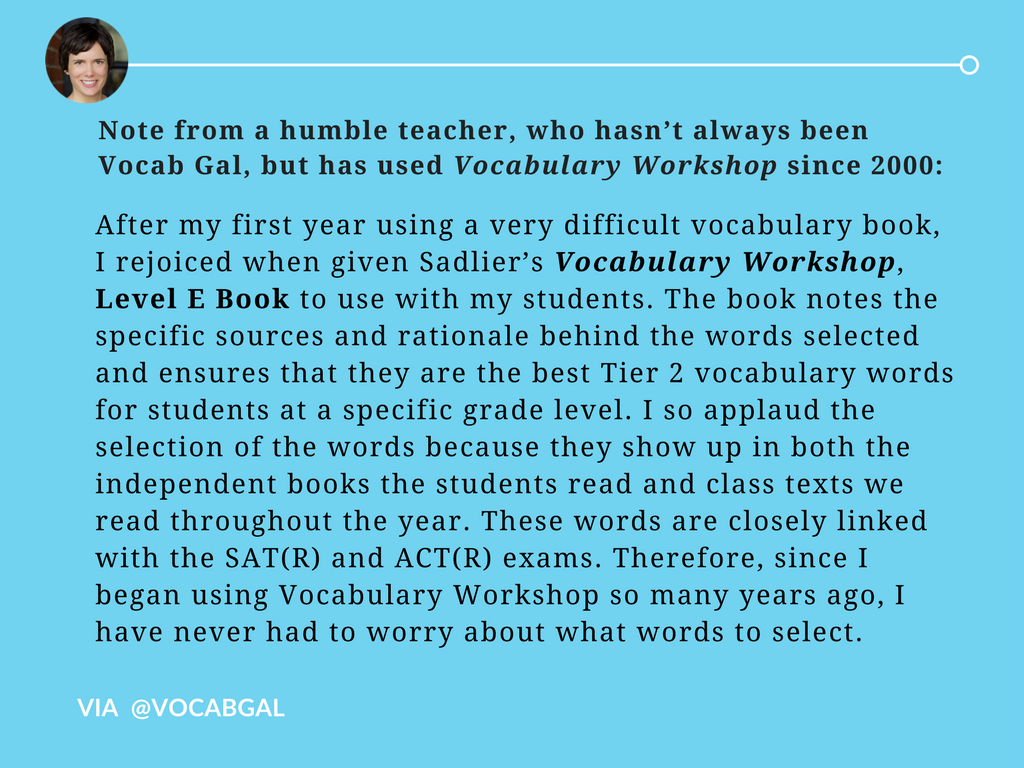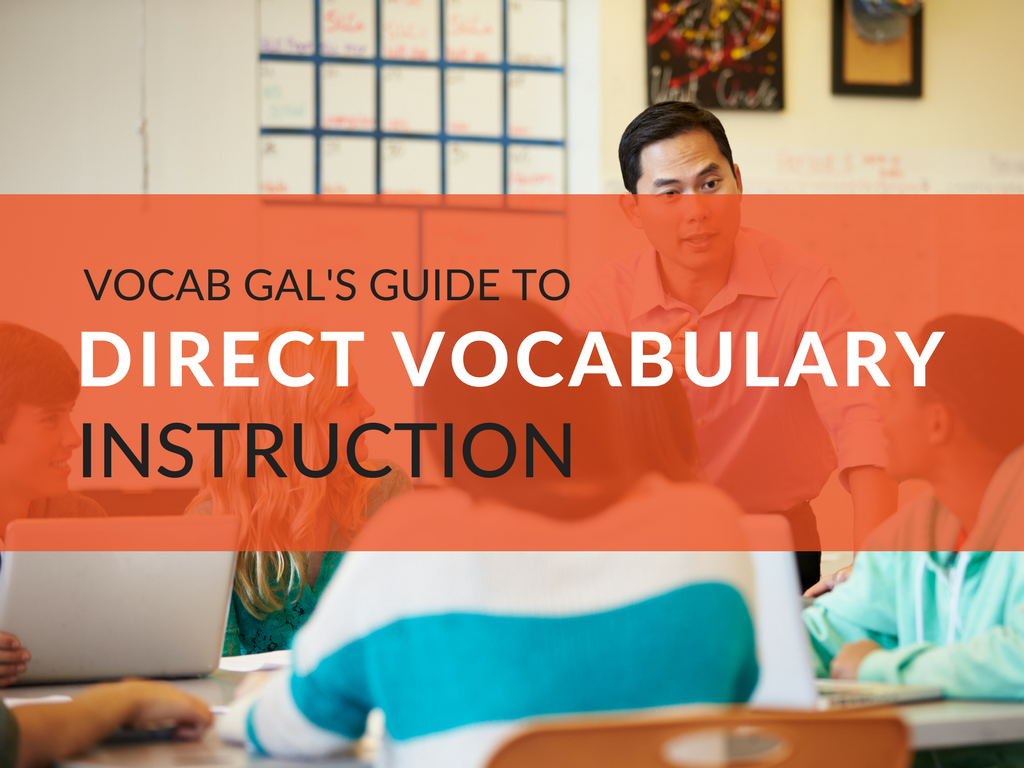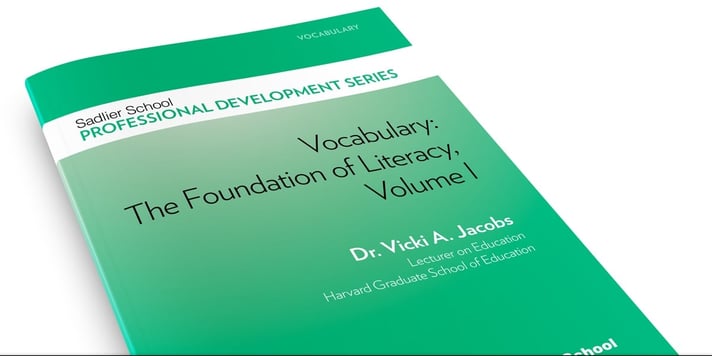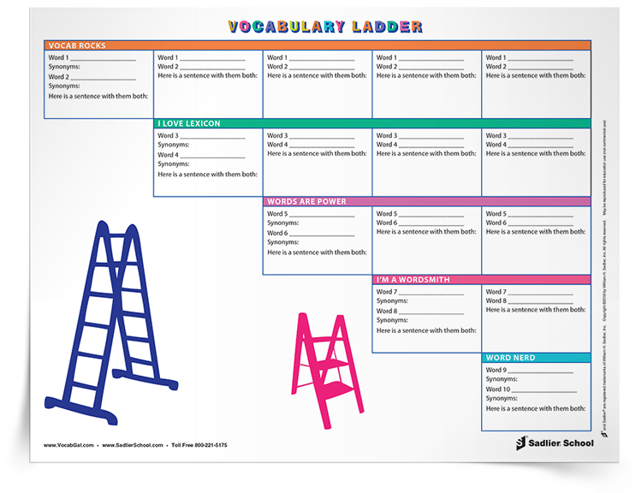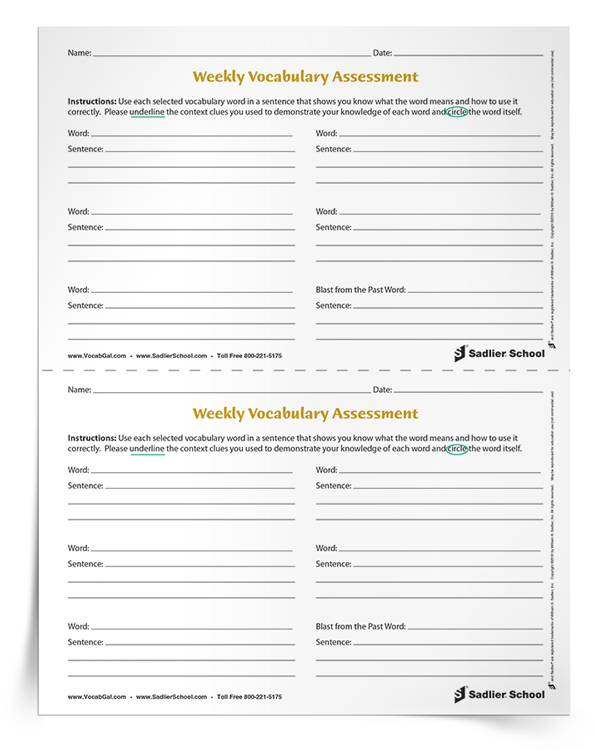March 8, 2018 VG Teaching Strategies Pro Dev Resources, Vocab Gal, ELA K-5, ELA 6-8, ELA Resources - Graphic Organizers, ELA Resources - Assessment, ELA Resources - Activities, ELA Resources - Tip Sheets, ELA 9-12, ELA PD - Leadership, ELA PD - Vocabulary, ELA Focus - Vocabulary
Simple Direct Vocabulary Instruction Strategies that Work (Proven Tips/Techniques by Vocab Gal)
By: Vocab Gal
In this post, readers will form a true understanding of how to successfully integrate all of the important aspects of direct vocabulary instruction into their classroom routine, regardless of how short the classes are or how many days between classes they have. Furthermore, teachers and coaches will have data to back up their vocabulary instruction decisions to quell any concerns from parents, colleagues or administrators. These vocabulary instruction strategies are how I've been successful in getting my students improving their lexicons and excited to learn new words.
There are three questions I get asked repeatedly:
-
How do you make time for vocabulary in a 45-minute class period?
-
How do you select the words?
-
How do you help students care about vocabulary?
The answer to all of these questions is direct vocabulary instruction. Selecting two new words from the Sadlier’s Vocabulary Workshop Achieve program a day, for most days of the year.
My daily Language Arts classroom routine begins with silent independent reading. We continue on with the direct instruction of the day’s two new vocabulary words and then on to the literary analysis and/or writing tasks of the day. If the vocabulary words need to be embedded in the sentence structure practice, they are included. If our daily independent reading needs to be shortened a minute, we do that. No matter what, vocabulary instruction is paramount.
A favorite co-teacher of mine once said to me, “You respect what you inspect.” Meaning, that whatever student work I took the time to evaluate, showed students what I thought was important. This quote has me often reflecting on how I show students what I prioritize each day with my daily agenda.
Download the FREE Vocabulary Ladder Chart now!
WHY DIRECT VOCABULARY INSTRUCTION NEEDS TO OCCUR DAILY IN THE CLASSROOM
The reason I take so much time in my daily agenda to focus on daily vocabulary instruction is that the research is clear that students who have higher vocabularies do better academically across ALL subject areas.
As Harvard Professor Dr. Vicki Jacob’s states in her white paper, Vocabulary: The Foundation of Literacy, Vol. I:
If vocabulary is at the ‘foundation of literacy,’ then academic vocabulary is at the heart of school learning. Vocabulary knowledge accounts for a significant amount of verbal ability; and verbal ability, in turn, is a strong predictor of K–12 academic achievement. In addition, vocabulary knowledge explains 70–80% of reading comprehension.
The research also highlights that direct vocabulary instruction is what makes the difference, not simply reading books at a higher lexicon level and hoping the words are learned indirectly. Furthermore, this direction instruction cannot simply be rote learning and memorization of dictionary definitions. Instead, teachers need to:
-
Offer students language and literacy rich classroom environments.
-
Demonstrate enthusiasm for and exhibit a committed personal interest in word learning.
-
Treat vocabulary learning as an active, generative, integrative, and cognitive process.
-
Provide students with multiple exposures to focal words in multiple contexts over an extended period of time—as well as multiple opportunities for students to use new vocabulary expressively and receptively, in oral as well as written language, and in novel contexts.
MY FAVORITE VOCABULARY INSTRUCTION STRATEGIES
Diagnostic Test
At the start of the year, I have all students take the Sadlier’s Vocabulary Workshop Diagnostic test. This test is a sampling of 50 of the 300 words students will learn throughout the course of the year. I explain to them that if they do well on the test, the expectation is for them to use these words and embed these them into their written and spoken lexicon, not just recognize their meaning on a multiple choice test.
If students do poorly on the test, I celebrate their “failure” as a chance to learn many new words they did not already know. Furthermore, at the beginning of each unit, I often use the “Choose the Right Word” exercise as a formative assessment for students to recognize how many of the words from that specific unit they already know in some capacity.
Don't have a diagnostic test? Download these Vocabulary Assessment Worksheets.
Weekly Vocabulary Routines
#1 INTRODUCE THE WEEK'S VOCABULARY WORDS
At the beginning of the week we read the introductory passage from Vocabulary Workshop. The new words are embedded in a nonfiction passage giving students the experience of seeing these words in context. Students use their word knowledge and skills to identify meaning of unfamiliar words. I have the students write what they think these words mean in the margins, and underline the context clues that helped them decide on the meaning.
Then we discuss the first two vocabulary words…
The new Vocabulary Workshop series has 2 sets of 10 words. This is a very manageable instructional model. I choose to introduce two of the 10 words a day.
Each vocabulary word is presented with a student friendly definition along with an illustrative sentence with the word used in context. If the word has multiple meanings, each meaning is represented.
We focus on context clues to help us come to a conclusion regarding meaning. The students select words or phrases in the sentence that helped them to understand the meaning of each word.
Finally, the students write a sentence that is relevant to them regarding the vocabulary words. Whether they are talking about a favorite TV show, book series, friend or family member, etc., the more they can connect their vocabulary words to their personal lives, the more they will remember the words.
#2 REVIEW WORDS WITH DAILY VOCABULARY CHARTS
To complete this process, I have two different handouts that help students review the words of the day and write their sentence(s). The first is a more traditional daily vocabulary chart, and the second is a new and fabulous vocabulary progress ladder that repeats previous words and adds on the new words of each day.
While some of my students become “word nerds,” all of my students develop strategies for unlocking meaning , as well as word study skills to understand word relationships, They also begin to recognize that their vocabulary words are all around them and start to incorporate them into their writing.
By increasing their vocabularies and developing word knowledge, students will increase their reading comprehension in all their classes and in testing situations.
#3 USE NEW VOCABULARY WORDS IN CLASSROOM DISCUSSIONS
Each day going forward we focus on the “words of the day” and discuss their connections to other vocabulary words, as well review the previous day’s words. We laugh as we share our sentences, discuss nuances in words and ask questions about what the words do and do not mean. We look back at the opening passage and work through the vocabulary exercises to practice using the words in context.
During this important time of direct vocabulary instruction, students are rewarded when they uses a vocabulary word, asks a thoughtful question about meaning, or connects a new word to a previous vocabulary word. The rewards are simply and fun. I use stickers and my students love collecting them!
Cultivate an Atmosphere of Respect for Building Word Knowledge
The atmosphere I cultivate is one of growth and respect for building word knowledge and word study. Students are given multiple ways to learn the vocabulary words from doing the exercises in Vocabulary Workshop books to crafting their own vocabulary tests. Some days we play games like Oranges to Oranges and Vocabland, or complete fun activities like Build a Sundae or Design a Car that reinforce their word knowledge.
My classroom instructions, demeanor, and expectations continue to highlight my love of words. I get excited when they share vocabulary words they have found in their reading, I require students to use vocabulary in their writing, and I acknowledge my students in hallways and at lunch when they use elevated lexicon.
My ultimate goal is to have students become aware of the plethora of language around them and begin to find strategies that work for them to discover the meaning of new words, as well as how to build word knowledge.
Weekly Assessments
Finally, at the end of each week or the beginning of the new week, I give students a summative assessment of what they have learned. This test consists of the current vocabulary words being studied as well as some from the previous units’ vocabulary words. Students are required to write sentences using these words that include context clues to demonstrate their knowledge of meaning as well as context clue and writing skills. Through these assessments, students see how much I value their ability to not just rotely memorize meaning, but rather embed their vocabulary in their written communication. By using the previous unit’s vocabulary words, I emphasize that all of the vocabulary words we learn are important for their reading and writing development.
Download my Weekly Vocabulary Assessment Handout now.
IN CONCLUSION
Ultimately, direct vocabulary instruction is the only way to help students develop a strong vocabulary. It cannot be done in a “drill and kill” type method. Through enthusiasm and play, context clue study and real-world example sentences, students will begin to recognize and utilize new words. Through utilizing the daily vocabulary learning ladder and playing with words through a plethora of games and activities , all participants will increase their vocabulary and gain word knowledge.
Indeed, direct vocabulary instruction is not something to be feared, but rather to be embraced. Although Dr. Jacobs reminds us that “effective academic word learning is a difficult, complex, and an ongoing process,” it is also a great deal of fun!
For more vocabulary instruction strategies download Vocabulary: The Foundation of Literacy, Volume II eBook.
